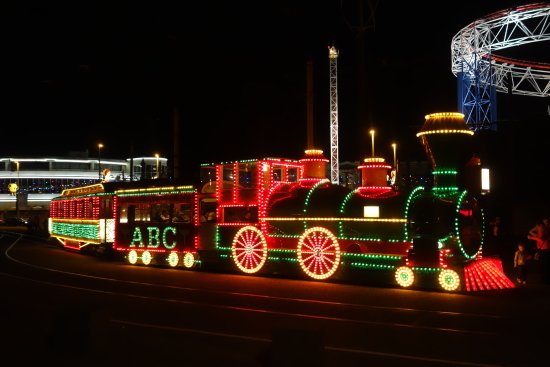Whittingham Mental Asylum in Preston first opened on 1st April 1873. Whilst the building was still being built the previous year, 115 patients had already been moved to the facility. Some of the patients actually helped with the construction of the building! The completed asylum had a 1100 patient capacity and had a catholic chapel, Anglican church and even a farm and sports hall.

Further extensions were built on the grounds, and by 1915, it was recorded that there were 2820 patients there, more than double the original capacity of the asylum.
Whittingham was such a major establishment that it had its own railway. A 2 mile private branch of track ran from Grimsargh. Its initial purpose was to transport coal and other supplies to the asylum but after it was opened in 1887, it also offered a means of transportation for the staff and patients at the asylum. It closed at the end of June in 1957.
In the First World War, the Asylum became a hospital for war casualties and the New West Annex was kept free for those who had been injured in 1918. There were some patients who’s wounds were too severe to save them and those who died in the asylum were buried in the private cemetery on the northern border of the asylum.

In 1923, Whittingham Asylum became known as Whittingham Mental Hospital ahead of the Mental Treatment act of 1930. The introduction of the Act meant that from 1930, patients started to voluntarily admit themselves to the hospital.
During the second World War, the hospital again became a hospital to treat the military and was returned to civilian use again in 1946.
The hospital became part of the National Health Service in 1948 and was subsequently renamed to “Whittingham Hospital”.
During the 1950s, two doctors working there at the time used War Surplus material to make an early electroencephalograph (EEG) machine. The machine cost £2.50 to build and it was used for breakthrough research. It was such a breakthrough that there was interest in the machine expressed by the American Department for Space Medicine.
On 18th July 1967, there was a meeting held by the Student Nurses association and during this meeting, a number of serious complaints were made against the hospital, citing cruelty, ill-treatment of patients and fraud. After this meeting, all students were summoned to a meeting with the Head Male Nurse who threatened the students with libel and slander. Further complaints were subsequently surprised until later on, when the Hospital Management Committee launched an inquiry into the complaints at the hospital.

There were many findings from this inquiry and as a result the Head Male Nurse and the Matron of the hospital took early retirement. There were two male nurses who were convicted of theft and another nurse was jailed for manslaughter after he assaulted an elderly patient who later died as a result of the assault.
One staff nurse who used to work nights at the hospital explained that whilst he was working there, he normally didn’t feel uneasy but recounted two experiences in particular that had made the hair stand up on the back of his neck.
Working 7:30pm to 7:30am, the nurse explained that if anything supernatural was going to happen, then it would probably be during his shift.
As most of the patients would be sleeping, it was usual for the staff working the night shift to talk to each other to pass the time. Whilst talking to a colleague one night, the colleague suddenly stopped talking and her expression changed. When the other nurse asked what was wrong, she explained that she’d seen a shadow on his shoulder. The staff nurse said that he didn’t feel anything on his shoulder but that the collegue he’d been speaking with was certain of what she’d seen.

The next experience that the staff nurse told about was a corridor that was well known amongst staff to be a bit spooky. The corridor was a shortcut between some of the wards. One story about the corridor was that a girl had taken the corridor to save the 5 or 6 minutes that it would otherwise take getting from one ward to another and when she was half way down the corridor, all the lights had suddenly gone off. The staff nurse explained that the one time he did walk down the corridor he felt very uneasy. There were windows along the corridor looking in on disused wards with old iron beds and the atmosphere just left him feeling very uneasy.
There have been many other stories of spooky things going on in the building from full body apparitions walking the corridors to eerie sounds and uneasy feelings.







